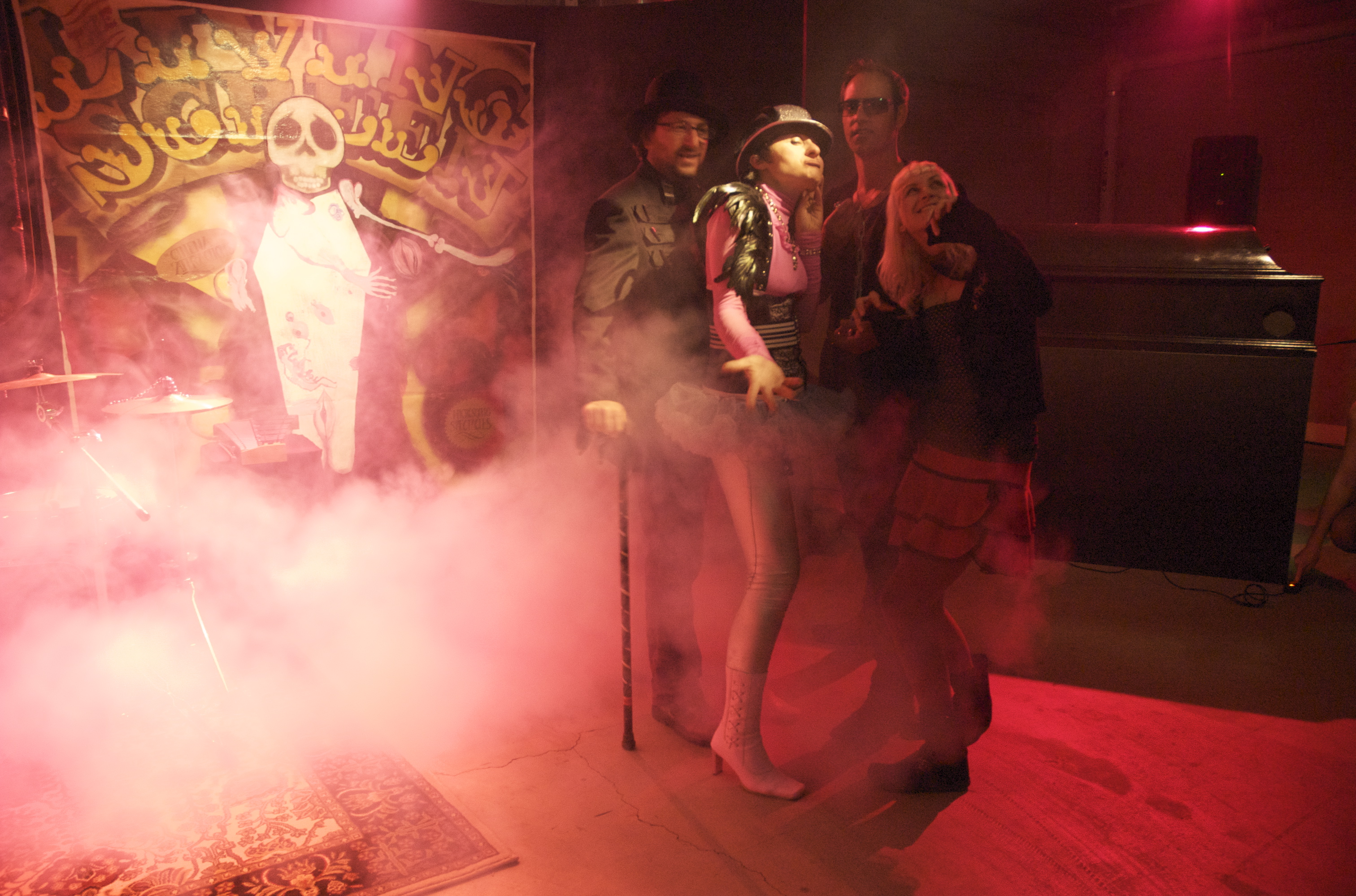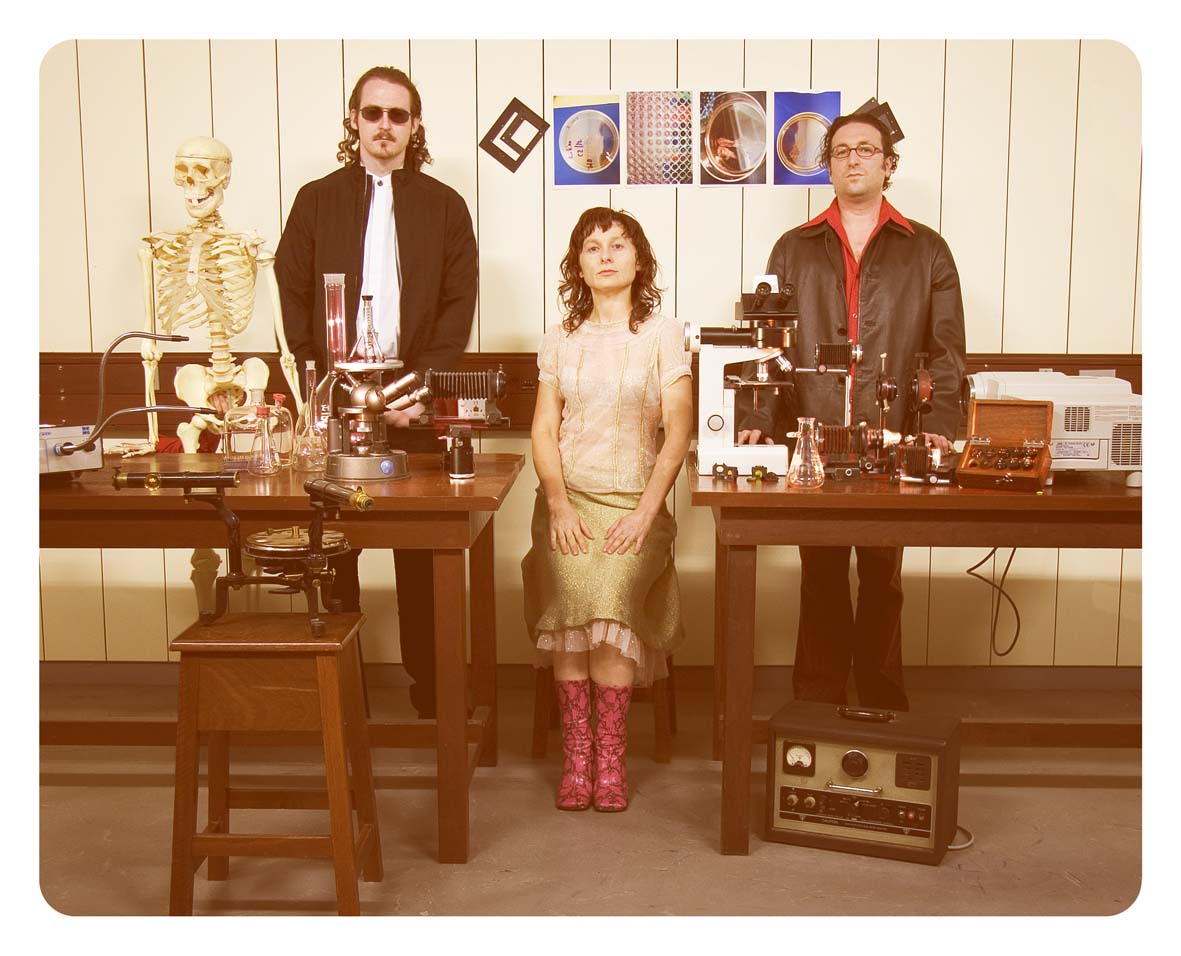About
The Living Screen project produces new poetics, made possible by fusing bio-technology into a living cinematic apparatus. It embodies and anticipates renewed cinematic techniques and modes of expression, while also offering an alternative approach to understanding Bio-Art, which is, ‘Bio-Art as a Freak Show’.
The project re-travels early cinema history and brings film theory into play to approach ones engagement with a Bio-Kino. Screens are grown or scavenged from different tissue sources and Nano-Movies are projected over these living canvases, via the Bio-Projector. (The projection is 25-50 µ (microns) in size)
The Living Screen is a new species, a living cinematic apparatus. When we gaze through it, we are engaging with a machine-organism. This work is a research and development project exploring what occurs when we cinematically engage with a living screen. It employs film theory to bring into question ones spectatorship with Bio-Kino.
The screens are alive, transform, react and change over time and eventually die. Therefore, it contort the projected Nano-Movie in as yet – unknown ways, and confront the spectators with issues such as life, death, virtuality and reality.
Collaborators

is currently completing her PhD. at Murdoch University, is a film and video lecturer at Edith Cowan University and a film critic for ABC720 radio. a moving image artist & film theorist, her work spans installation through to video phone micro-movies and television documentary. most recently her work has screened as part of Microcinema’s Touring International Screening Program, ‘Independent Exposure’. TV often cross-pollinates her work with bio-art and/or performance.

Bruce Murphy is an Optical Engineer working in the field of biomedical diagnostics. A Perth native with degrees in Computer Science and Electronic Engineering he is currently completing a PhD with The Optical+Biomedical Engineering Laboratory at the University of Western Australia in tissue modelling and the design of spectroscopic diagnostic tools. BioKino is his first major art collaboration but he has preexisting interests in electronic music, human performance interfaces and Artificial Intelligence.
Elements of Bio-Kino

There are 4 elements to the LIVING SCREEN project:
- THE BIO-PROJECTOR – is fashioned on the Kinetoscope and the Kinetoscope’s similarities to a coffin. It is the machinery of the cinematic apparatus that includes the projector device, the microscope and the optical lenses.
- THE LIVING SCREEN – functions as part of the cinematic apparatus. Different types of screens [prepared and obtained from varying tissue cultures] are projected onto, each one of them symbolic in a different way. The properties of these screens inform the content of the projected Nano-Movies.
- THE NANO-MOVIES – are conceptually linked the living screen that they are being projected onto (see “The Monstrous Other” installation)
- THE SPECTATOR – You! When U peer through the Bio-Projector, and gaze at the Nano-Movie being projected onto the Living Screen, you become the final ingredient in this Bio-Kino apparatus.
The combination of film theory and bio-art is as yet unexplored from our particular approach. In overlaying digital pixels over biological pixels we intend to explore the tension between the inanimate and the animate and the digital versus the biological. We hope that the spectators will undergo a powerful engagement with the living screen. This projection chooses the raw, fleshy, unprocessed aesthetics over the hyperrealism of the digital.
The Living Screen has many connections to primitive cinema, early motion pictures that pre-date 1905 that fall under the category of the ‘cinema of attractions’. Tom Gunning defines the ‘cinema of attractions’ as a form of confrontation that addresses the audience directly. “Rather than being an involvement with narrative action or empathy with character psychology, the cinema of attractions solicits a highly conscious awareness of the film image engaging with the viewers’ curiosity.”

The screens will transform, react and change over time and eventually die. This is the confrontation that the spectator must face. “Confrontation rules the ‘cinema of attractions’ in both the form of its films and their mode of exhibition. The directness of this act of display allows an emphasis of the thrill itself – the immediate reaction of the viewer.” What thrill will the spectator receive when it clearly confronts the spectator about life, death and the Other.
Fairgrounds and vaudeville houses were where early cinema found its audiences. It was also a form of safe house for the Other. With Bio-Art proliferating throughout the world, the art galleries of today are no less a freak show, as is The Living Screen.
Archive Website
Support











